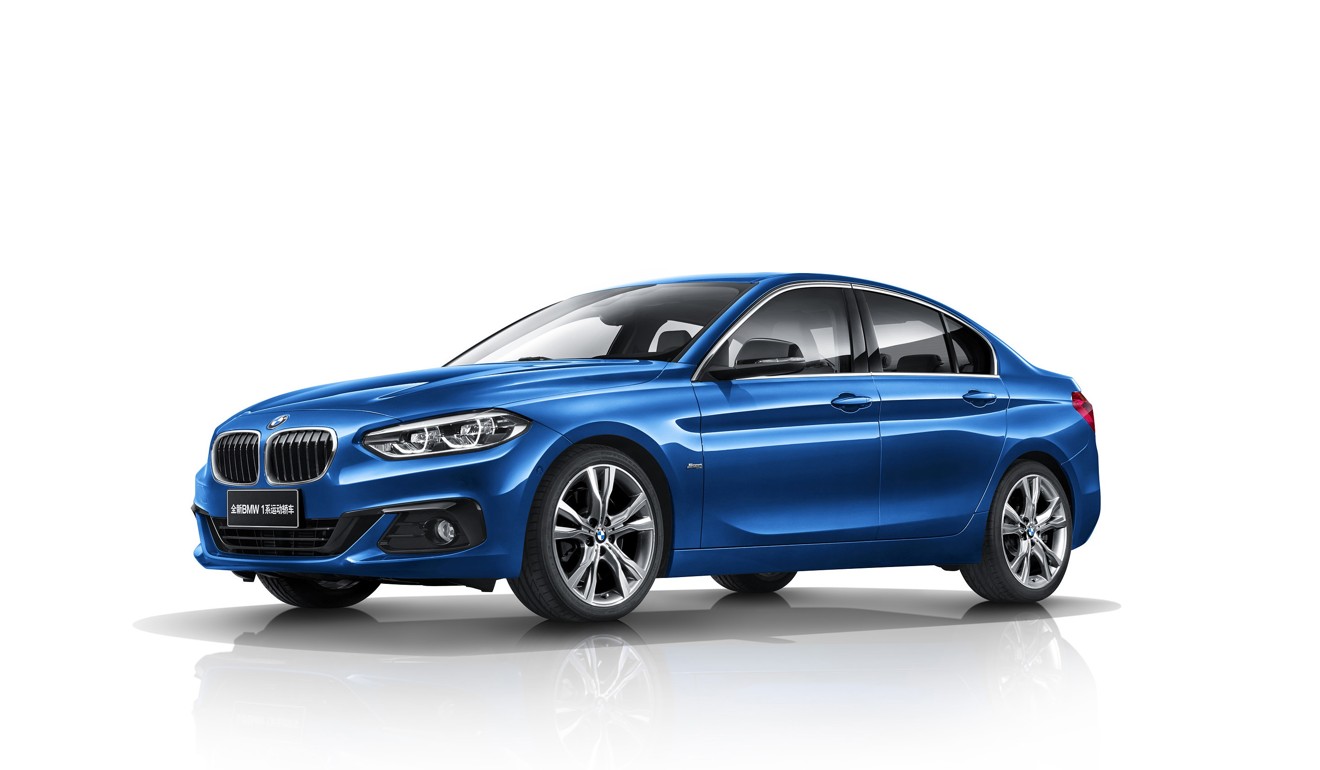
BMW’s 1 Series saloon thrives in Shanghai, exclusively for fresh Chinese graduates
BMW has built a 1 Series saloon for China’s fresh college graduates. The nation’s rich kids should love it
Audi has traditionally held the premium crown in China, thanks to its early entry into the market. However, BMW and Mercedes-Benz have been rapidly catching up with sales over the past few years. Audi has also reportedly had a dispute with some of its dealers, so BMW hopes that it can take over the Four Rings’ mantle with a string of new locally produced models.
As such, the 1 Series saloon is a key model. China-only models are not a new phenomenon; they have been done by mainstream manufacturers, most notably Buick, Volkswagen, Hyundai and Honda, for some years. However, up to now, premium-brand dabbling was confined to lengthening existing models. Acura was the first to change this with the CDX last year, and BMW is the first of Germany’s Big Three marques to produce such a car.

The 1 Series saloon is “manufactured as part of the joint venture between the BMW Group and BMW Brilliance Automotive at the Tiexi plant opened in 2012”, the marque says.
So, let’s get the name issue over with first. The China-only 1 Series saloon bears no relationship to the hatchback with the same name, and perhaps should be called the “2 Series” as it shares its platform and drivetrains with the 2 Series Active Tourer, which is also locally produced. As such, it is the first front-wheel-drive saloon produced by BMW. It is, however, no cynical compromise and still a driver-centred performance-orientated vehicle.

Externally, the test car has the look of a stubby mini 3 Series. Strangely for a BMW, the headlights are not round but a hexagonal shape, which is supposed to appeal more to the young target market. According to BMW, the car is aimed at fresh college graduates.
The front dashboard and controls are similar to those in the X1 and 2 series Active Tourer. The dashboard in the test car was dark with chrome-effect inserts – wood inserts are also available – and dominated by the floating 8.8-inch screen on top. In an age where most cars have touch screens, this model still uses the iDrive system, which involves a dial on the centre tunnel and steering-mounted controls. While the materials are of fine quality, it is astounding that just how little equipment is included in the price.

While the front seats are electrically adjustable, the upholstery on the 120i test car – the second-highest spec level in the range – did not have leather seats. Leather seats are only standard in the range-topping 125i. The 120i makes do with artificial leather and non-heated seats.
On the other hand, a panoramic sunroof makes the cabin feel very light and airy. Legroom in the back is adequate, but the model’s sloping roofline restricts room and meant that it is only really comfortable for passengers up to about 170cm tall. The boot is sturdy and spacious. While there is no spare tyre – BMW supposedly employs puncture-proof wheels – there is what the marque refers to as a “magic trunk” where the spare would normally be. This hidden compartment is accessed by a folding-up cover, the handle of which came off in the test car. For longer loads, the seats fold down.

The range’s basic 118i models get BMW’s three-cylinder 1.5-litre turbo coupled with a six-speed automatic gearbox. Both the 120i and the 125i employ the same four-cylinder two-litre turbo unit as the 3 Series, along with an eight-speed dual-clutch transmission. In the 120i, the engine pumps out 192 horsepower and is boosted to 231hp in the 125i.
Our test was conducted on near-deserted public roads behind a clutch of dealers in deepest Pudong in Shanghai. With a Porsche Cayman hurtling along the roads, we drove on what is almost akin to a private track.
Cornering at speed, there is some tail slide, thanks to the front-wheel-drive setup, but in general the car seems firmly planted on the road. Steering is well weighted and precise.
With most automatics, changing the modes on the gearbox has little discernable effect, not so on the 120i. The EcoPro mode really dulls responses, but you can see on the digital display between the rev counter and speedometer how many kilometres you are adding to the tank range of the car. BMW incorporates Efficient Dynamics to cut fuel consumption, with even the 125i returning a respectable 6.4 litres per 100km figure.

Comfort mode ramps up the responses somewhat, but Sport really sets the car on fire with a tightening of the handling as well. There is a manual mode and paddle shifts that make the car really quite fun. In manual mode, the gearbox does override your selections, if needs be, but for much of the time just displays suggestions for changes. Gear shifts are very smooth and there is also very little turbo lag. Acceleration is quick with the 120i with a dash to 100km/h in about 7.5 seconds.
Our test car in Estoril Blue had poorly applied aftermarket racing stripes, making it look like a boy racer’s go-fast fantasy. As a small, quick car, it is really a compelling package. However, for a list price of 289,800 yuan (US$42,747), the equipment level is really quite limited and it would require young college graduates with very rich parents to afford such a vehicle as their first car.

